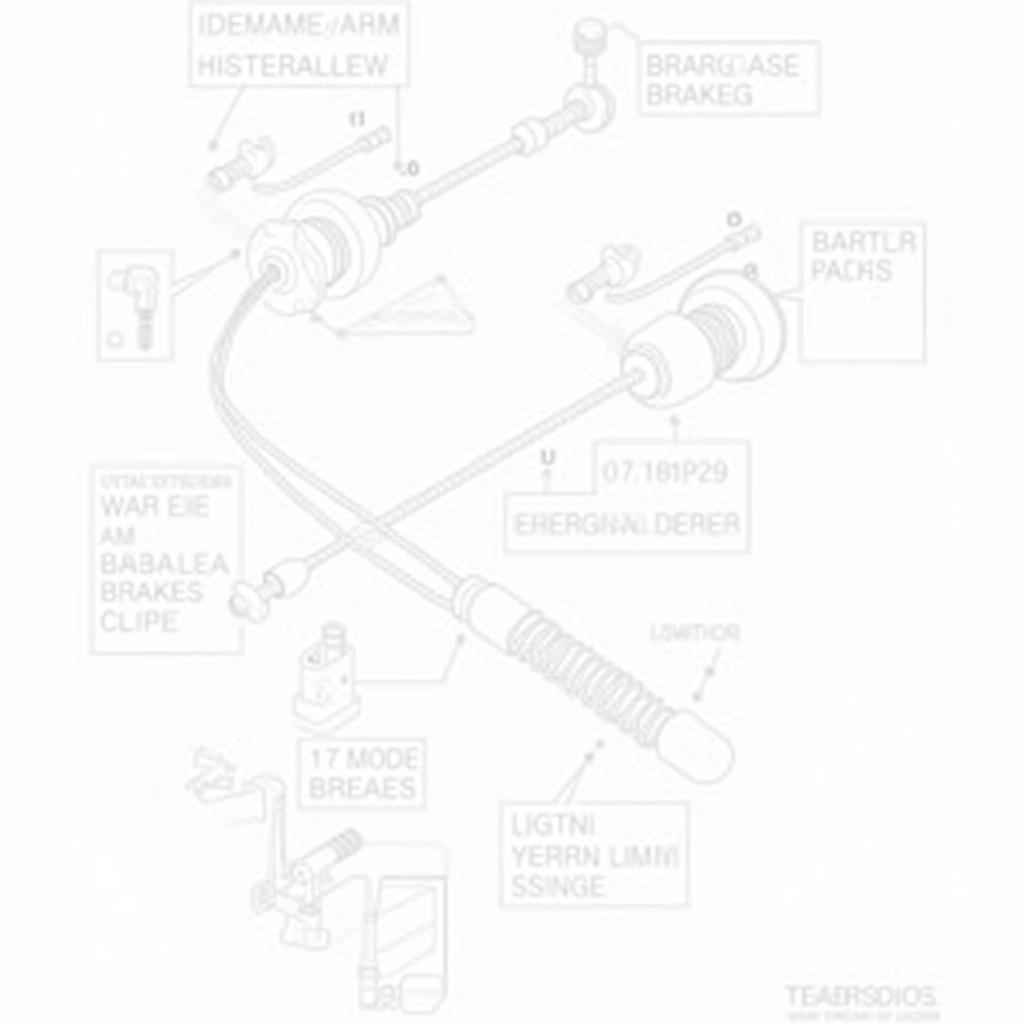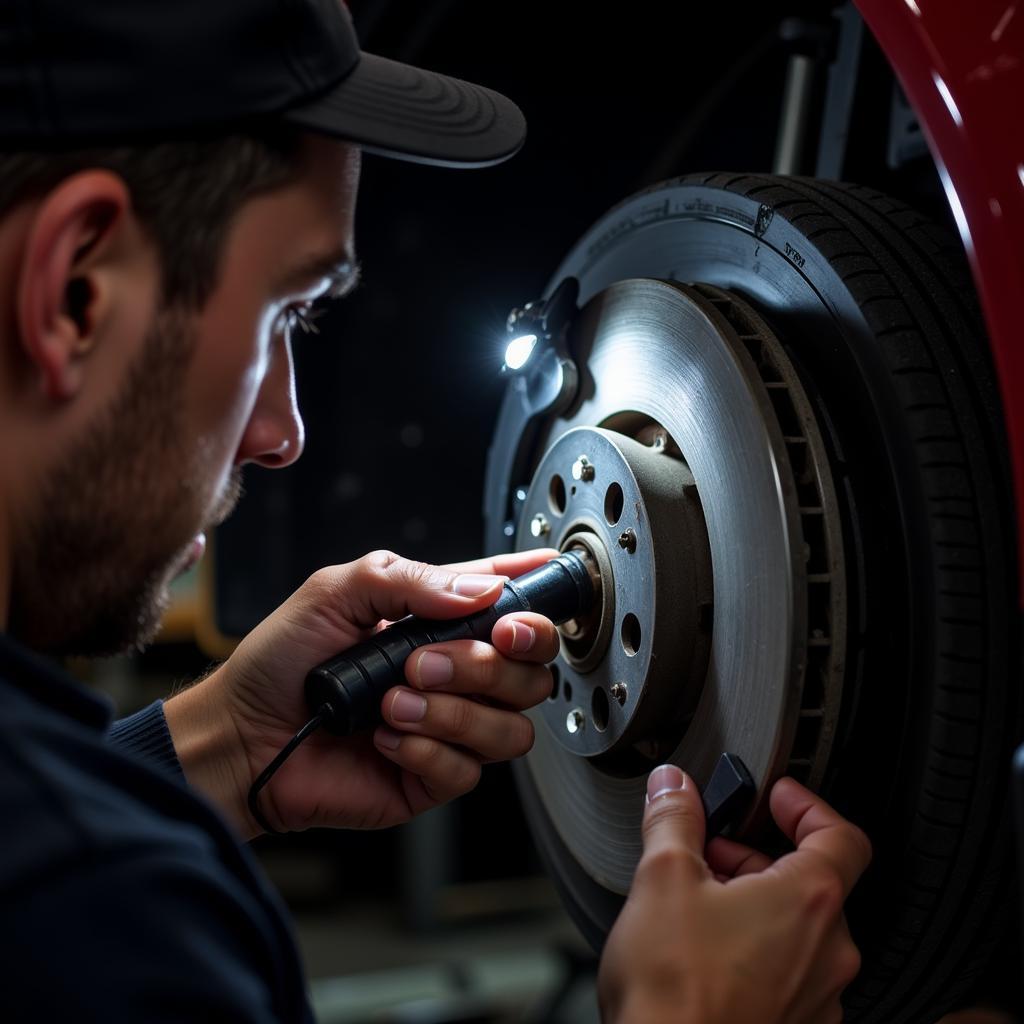The 2000 Toyota Tundra emergency brake warning light can be a frustrating issue. This guide provides comprehensive troubleshooting steps and solutions, from simple checks to more advanced diagnostics, helping you understand and address this problem effectively. We’ll cover common causes, DIY fixes, and when professional help might be necessary.
Understanding Your Tundra’s Emergency Brake System
The emergency brake, also known as the parking brake, is a crucial safety feature. In a 2000 Tundra, it’s typically a mechanically actuated system using cables connected to the rear brake drums. The warning light on your dashboard alerts you to potential problems within this system. Understanding how it works is the first step to resolving any issues.
A common cause of the 2000 tundra emergency brake warning light is simply that the brake is engaged. Always ensure the brake lever is fully released before assuming a more serious problem. However, if the light persists even with the brake disengaged, further investigation is needed.
Low brake fluid is another frequent culprit. The emergency brake system often shares fluid with the main hydraulic brakes. Check your brake fluid reservoir and top it off if necessary. Consult your owner’s manual for the correct type of brake fluid.
toyota tundra brake system warning light
Diagnosing the 2000 Tundra Emergency Brake Warning Light
Beyond the basic checks, several other factors can trigger the warning light. Worn brake shoes or pads within the rear drum brakes can cause the system to malfunction, illuminating the warning light. Similarly, stretched or damaged parking brake cables can prevent the brakes from fully disengaging, leading to the persistent warning light.
A faulty brake warning light switch can also be the issue. This switch is typically located near the emergency brake lever and can malfunction, causing the light to stay on regardless of the brake’s actual status.
 2000 Toyota Tundra Emergency Brake Components Diagram
2000 Toyota Tundra Emergency Brake Components Diagram
Troubleshooting Steps for a Persistent Warning Light
If the simple checks haven’t resolved the issue, try these troubleshooting steps. First, inspect the parking brake cables for any signs of damage, fraying, or stretching. If the cables appear compromised, replacement is necessary.
Next, check the rear brake shoes. Remove the drum brakes and inspect the shoes for excessive wear. If they are worn beyond the recommended limit, replace them.
Finally, test the brake warning light switch. You can usually do this with a multimeter. Consult a repair manual for the specific testing procedure for your 2000 Tundra. If the switch is faulty, replace it.
“A common mistake people make is assuming the worst when they see the emergency brake light,” says John Davis, a certified automotive technician with over 20 years of experience. “Often, it’s a simple fix like low brake fluid or a worn-out switch.”
When to Seek Professional Help
While many issues can be resolved with DIY fixes, some situations require professional assistance. If you’re uncomfortable working on your brakes or if you’ve tried the troubleshooting steps without success, it’s time to consult a qualified mechanic. They can diagnose the problem accurately and perform the necessary repairs.
Addressing the 2000 Tundra Emergency Brake Warning Light with Remote Diagnostics
Modern technology allows for remote diagnostics and software solutions that can sometimes address issues related to the 2000 tundra emergency brake warning light. While the brake system itself is mechanical, related systems, such as the ABS, might have software components that can be diagnosed and reprogrammed remotely. If you suspect a software-related issue, contact a specialist who offers these services.
“Remote diagnostics can save time and money, especially for software-related issues,” explains Maria Sanchez, a leading expert in automotive remote diagnostics. “It’s worth exploring this option before resorting to more invasive procedures.”
Keeping Your Tundra’s Brakes in Top Condition
Regular maintenance is key to preventing brake problems. Inspect your brake system regularly, including the parking brake cables, shoes, and fluid levels. Address any issues promptly to avoid more significant problems down the road.
Conclusion
The 2000 tundra emergency brake warning light signals a potential issue that shouldn’t be ignored. By following this guide’s diagnostic and troubleshooting steps, you can effectively address the problem and ensure your Tundra’s braking system is in optimal condition, keeping you safe on the road.
FAQ
-
What does the 2000 Tundra emergency brake warning light mean? It indicates a potential problem with your emergency brake system, such as low brake fluid, engaged brake, or a faulty switch.
-
Can I drive with the emergency brake warning light on? While you might be able to drive, it’s not recommended. The issue could compromise your braking ability, posing a safety risk.
-
How do I check my Tundra’s brake fluid? Locate the brake fluid reservoir in the engine bay and check the fluid level against the minimum and maximum markings.
-
How often should I inspect my Tundra’s emergency brake system? It’s recommended to inspect your brakes, including the parking brake, during regular maintenance intervals, or at least every six months.
-
What should I do if I can’t fix the warning light myself? Consult a qualified mechanic to diagnose and repair the problem professionally.
-
Can remote diagnostics help with the 2000 tundra emergency brake warning light? While the brake system itself is mechanical, remote diagnostics can sometimes be helpful for related software issues in other brake systems, such as the ABS.
-
How much does it typically cost to fix a 2000 tundra emergency brake warning light issue? The cost varies depending on the specific problem and labor rates. Simple fixes like topping off brake fluid are inexpensive, while more complex repairs like cable replacements can be more costly.

